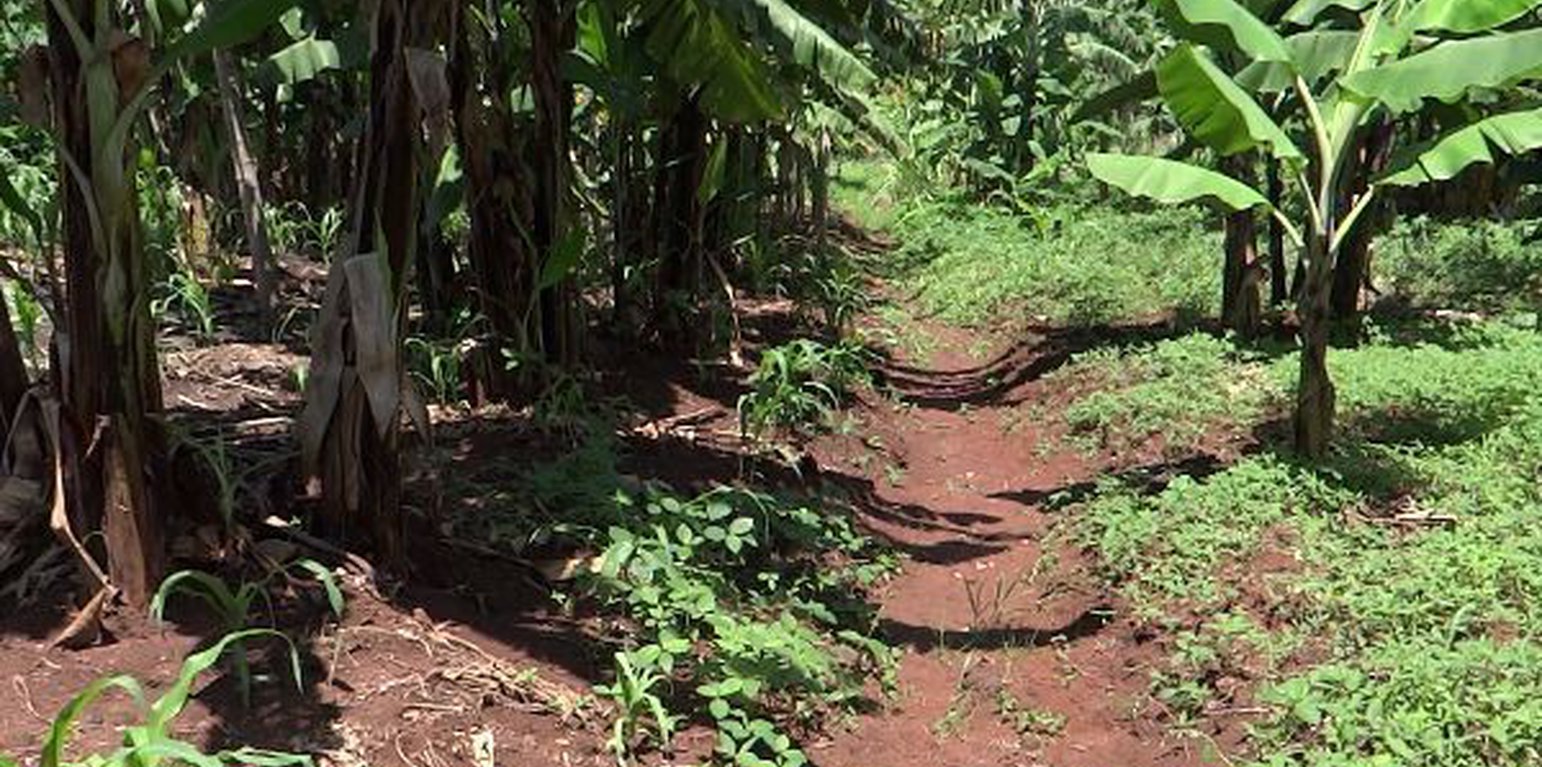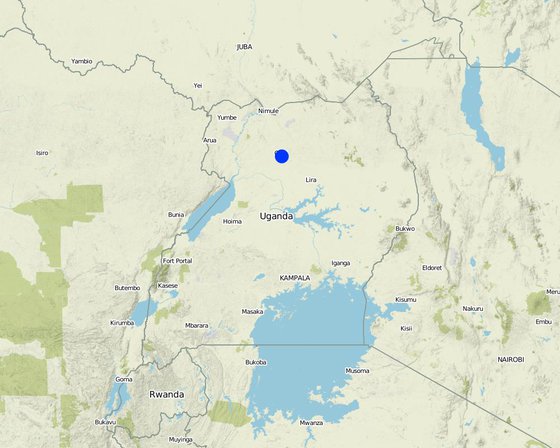



Soil and water runoff is a major challenge encountered by farmers growing banana in Northern Uganda. As a remedy, farmers have started using trenches commonly referred to fanya juu, fanya chini. This is one of the technologies intended to help reduce soil and water runoff on cultivated and degraded land under banana in order to increase water infiltration and improve soil fertility.
The trenches are normally established during the dry season on small pieces of land of about 0.5 to 1 acre, with slopes ranging from 16 to 30% in areas with high rainfall. The trenches are measured, using a tape measure, 0.5 m deep and 50 m long banana planted at a spacing of 3 metres between plants to allow suckers to grow in addition to applying cow dung during maintenance which is locally obtained at no cost.
Implements and materials required to construct the trenches include ropes, spades, and hoes. Once the trenches have been constructed, natural grass can be allowed to grow or elephant grass planted on both sides of the trenches to stabilize the soils and reduce sediments falling into the trenches.
In this practice, the land user starts with identifying soil erosion hotspots within the banana plantation where the trenches are to be established. This is followed by looking for labour and money to pay for digging the trenches.
Trenches are effective in reducing soil and water runoffs under banana production immediately when it starts raining. It is worth to note that, the costs associated with paying labour for digging the trenches and buying inputs are higher during establishment compared to the costs of maintenance; this is because during maintenance the land user only needs to pay for labour to remove sediments from the trenches.
Establishing trenches under banana plantations requires the land user to be provided with prior knowledge and skills through training on the proper procedures on establishing the trench using the correct measurements of 0.5 m deep and 50 m long with banana planted at a spacing of 3 metres with the help of a tape measure, ropes, spades, and hoes and as required inputs.

Location: Gulu District, Northern Region,Uganda, Uganda
No. of Technology sites analysed: single site
Spread of the Technology: evenly spread over an area (approx. < 0.1 km2 (10 ha))
In a permanently protected area?:
Date of implementation: 2015; less than 10 years ago (recently)
Type of introduction












| Specify input | Unit | Quantity | Costs per Unit (UGX) | Total costs per input (UGX) | % of costs borne by land users |
| Labour | |||||
| Persons days | persons | 10.0 | 5000.0 | 50000.0 | 100.0 |
| Equipment | |||||
| Spade | Pieces | 10000.0 | 100.0 | ||
| Wheel barrow | Pieces | 10000.0 | 100.0 | ||
| Ropes | Pieces | 1.0 | 3000.0 | 3000.0 | 100.0 |
| Tape measure | pieces | 1.0 | 25000.0 | 25000.0 | |
| Total costs for establishment of the Technology | 78'000.0 | ||||
| Total costs for establishment of the Technology in USD | 23.28 | ||||
| Specify input | Unit | Quantity | Costs per Unit (UGX) | Total costs per input (UGX) | % of costs borne by land users |
| Labour | |||||
| Labour | Persons | 5.0 | 5000.0 | 25000.0 | 100.0 |
| Fertilizers and biocides | |||||
| Fertiliser | Kgs | 2.0 | 3500.0 | 7000.0 | 100.0 |
| Biocides | litres | 2.0 | 3500.0 | 7000.0 | 100.0 |
| Total costs for maintenance of the Technology | 39'000.0 | ||||
| Total costs for maintenance of the Technology in USD | 11.64 | ||||
High at the time digging trenches but over a period of time reduces
From the sale of banana.
More tasks at establishment and over a period of time reduces which affects labour costs.
Extension workers extend knowledge to the farmers and other farmers come to learn from other farmers promoting the technology.
As a planted grasses (elephant grass) on the trench.
Due to the presence of the trenches and grasses planted as stabilizers.
Water runoff is controlled by the trench.